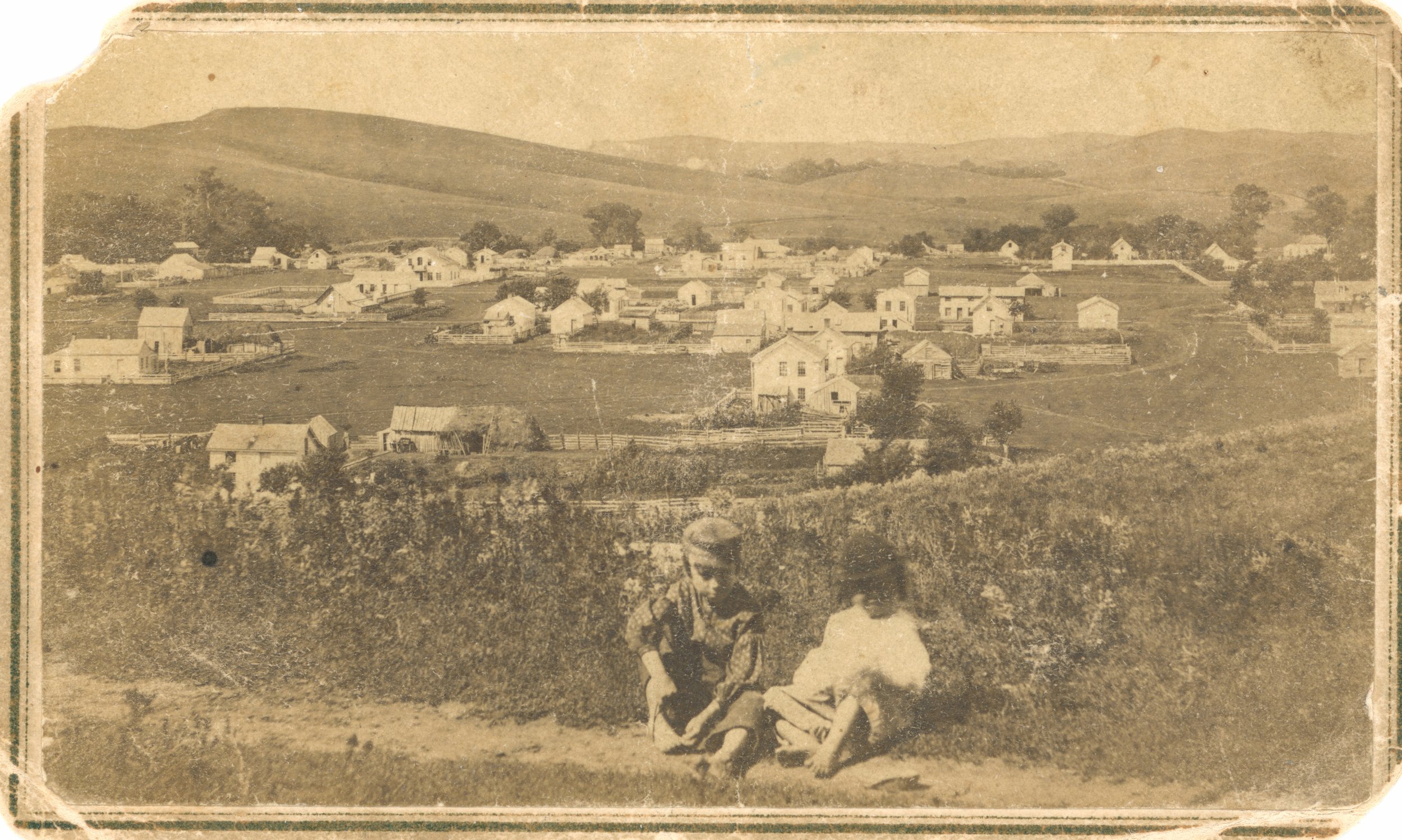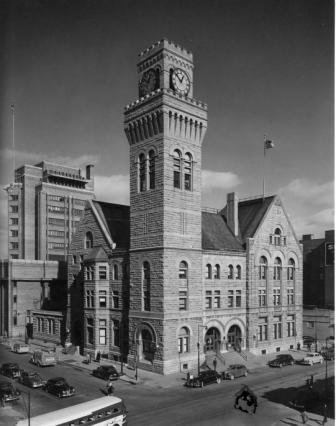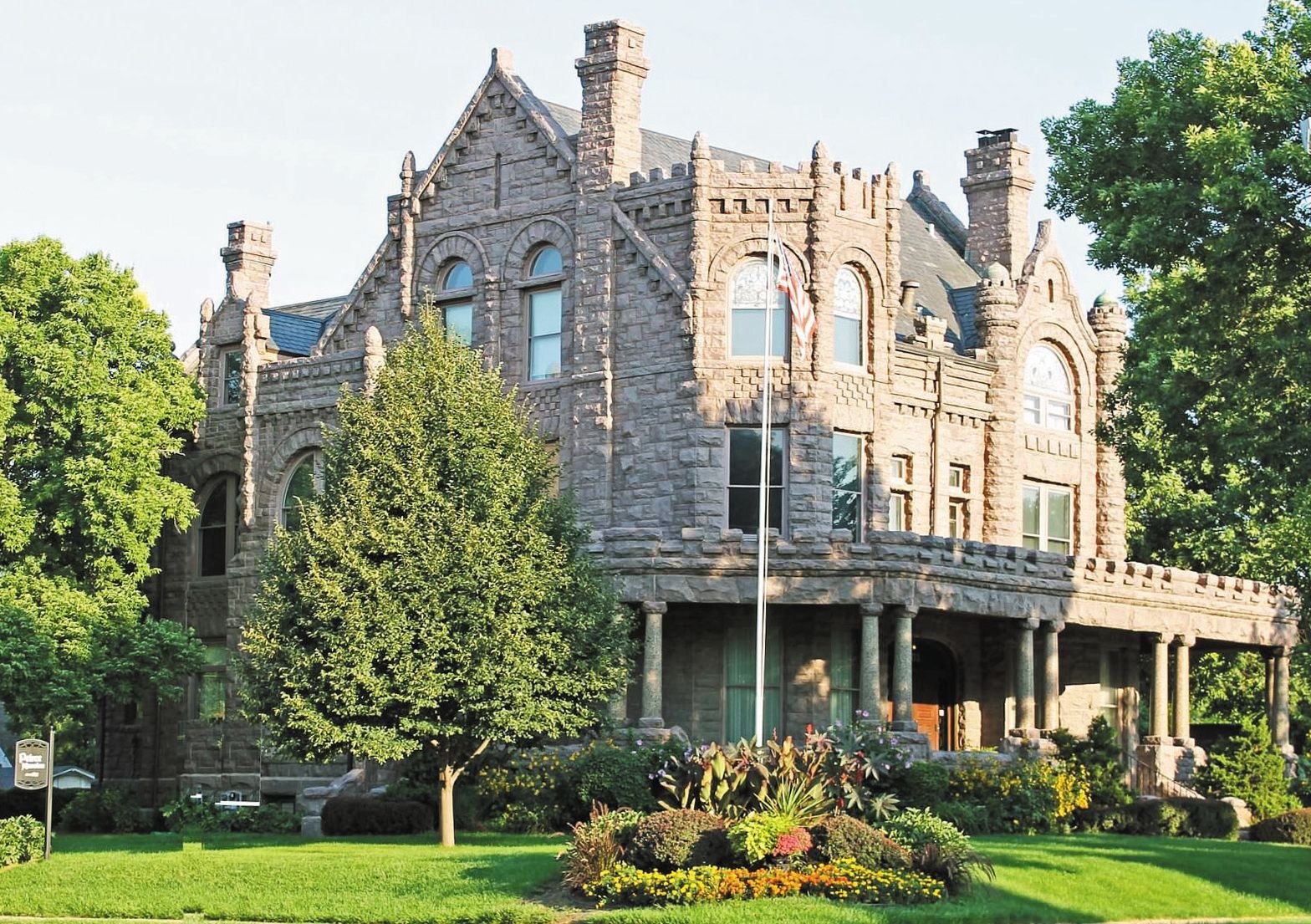
Sioux City History
Your link to the past.

War Eagle Monument
Wambdi Okicize is commonly known as War Eagle. He was born in either Wisconsin or Minnesota around 1785. While his Indian name means "Little Eagle," whites always referred to him as War Eagle, which is odd because all through his life War Eagle sought to keep peace.

Bruguier’s Cabin
Now considered to be the oldest structure in Sioux City, this one-time abandoned house was about to be demolished in 1933. After workers discovered that the house was originally a log cabin, it was determined that the house was one of the log cabins of the Theophile Bruguier farm.

Central High School/Castle on the Hill
The High School, as it was originally called, opened in the spring of 1893. It was renamed Central High School in 1924 when other high schools were opened. The school’s design reflected the flamboyant attitude of Sioux City's boom years.

City Halls of Sioux City
Sioux City’s first City Hall was actually a library. Built in 1891 by the Library Building Association for $122,000, it stood on the northwest corner of Sixth and Douglas. Later, the former Federal Building with its clock tower was converted into the City Hall.

First Bride's Grave
The First Bride's Grave monument was built in 1938 by the Woodbury County Pioneer Club near the grave of Rosalie Menard Leonais. The Pioneers Club called her the "first bride" because she was believed to be the first bride of a non-Native American in the area that would become Sioux City.

Floyd Monument
The Floyd Monument is an Egyptian-style obelisk, 100 feet high and built of Kettle River sandstone. The monument marks the location of the grave for Sergeant Charles Floyd, who is best known as the only member of the crew to die during the Lewis and Clark Expedition, and the first United States soldier to die west of the Mississippi.

Grandview Park & the Band Shell
As the city grew around the grassy acres, Grandview Park provided a place to play, enjoy nature and listen to music. In later years, a rose garden, band shell and playground were added for everyone's enjoyment.

Historic Fourth Street
“Historic” or “Lower” Fourth Street refers to the two city blocks between Virginia and Iowa Streets in downtown Sioux City that contain thirteen structures dating from 1889 to 1915. The majority of the buildings in the district have undergone extensive renovation. Now known as the Fourth Street Historic District, the area is one Sioux City’s most popular entertainment spots.

Peirce Mansion
The Peirce Mansion was built by John Peirce as a family home in 1890 for $80,000. The Pierce family lived in the house from 1891 to 1893 when John Peirce lost his fortune in the national depression.

Prospect Hill
On Prospect Hill is a monument erected in memory of three pioneer missionaries. These men, Reverends Jackson, Cleveland, and Elliot, were on their way to the west to teach Christianity. All of the members of the Sioux City settlement were asked to attend a prayer meeting on this hill. The monument was built later to commemorate this event.
